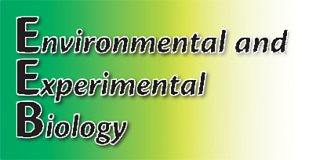
On-line: ISSN 2255–9582

| Faculty of Biology, University of Latvia | ||||||

|
Hard copy: ISSN 1691–8088
On-line: ISSN 2255–9582 Env Exp Biol (2013) 11: 159–177
|
|||||

|
About the Journal | Retractions | Open Access | Author Guidlines | Current Issue | Archive |
|
Environmental and Experimental Biology |
Env Exp Biol (2013) 11: 159–177 |
Ingredients of natural origin are increasingly used for cosmetic and personal care product formulations. Characteristics of new natural and organic brand cosmetic products need to be determined, including safety profile and efficacy potential. A number of in vitro tests can be considered suitable to provide estimation of the safe and effective concentration range for biologically active ingredients from established and novel sources. Since animal testing of cosmetic ingredients and final compositions is now banned in the European Union, in vitro cell and tissue culture based methods have to provide an alternative. Various skin cell monoculture test systems and more complex models such as cell co-cultures and three-dimensional organotypic tissue cultures are reviewed. In the present paper references to study reports and protocols that have been used to characterize a variety of natural origin ingredients using in vitro cell and tissue test systems are summarized.